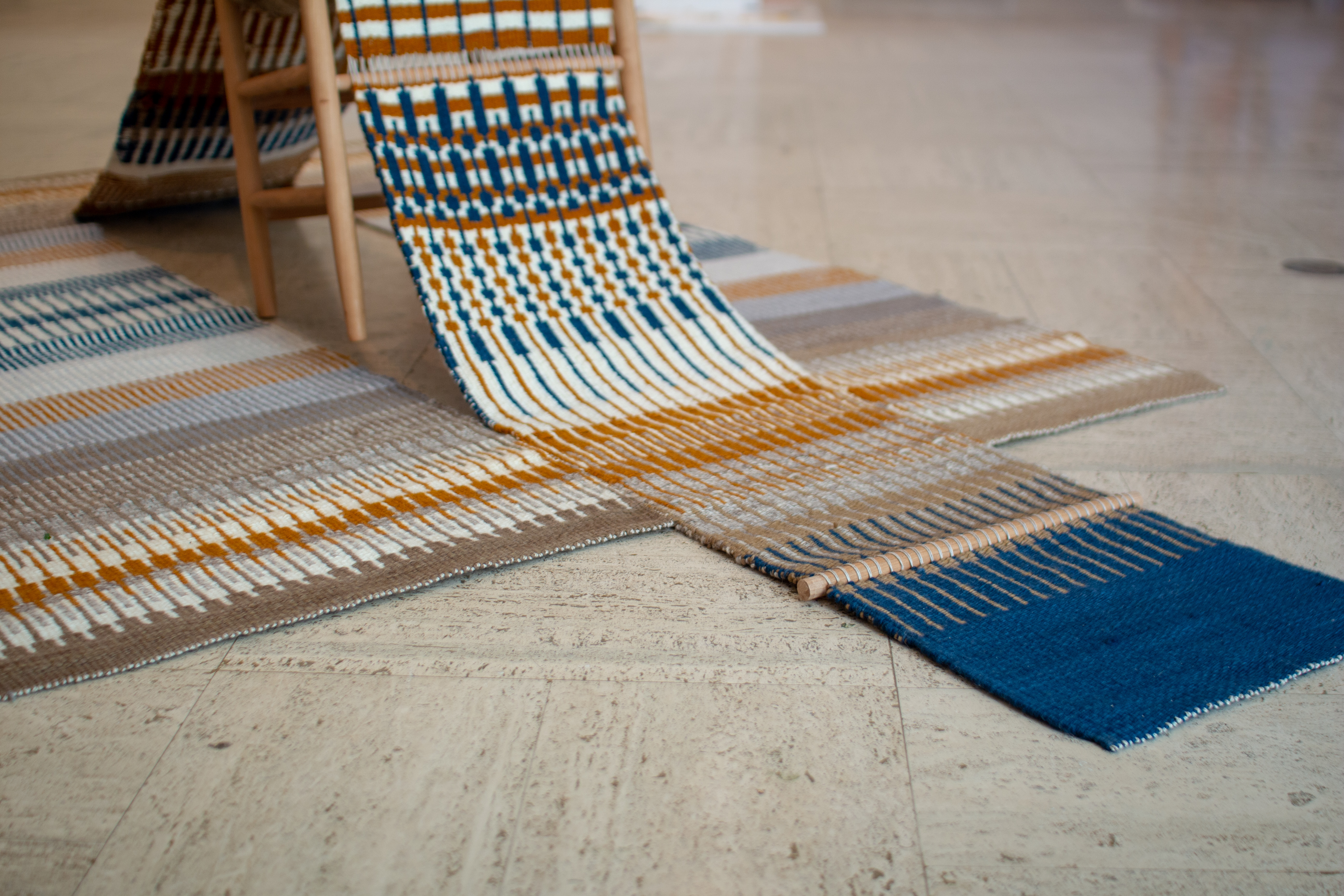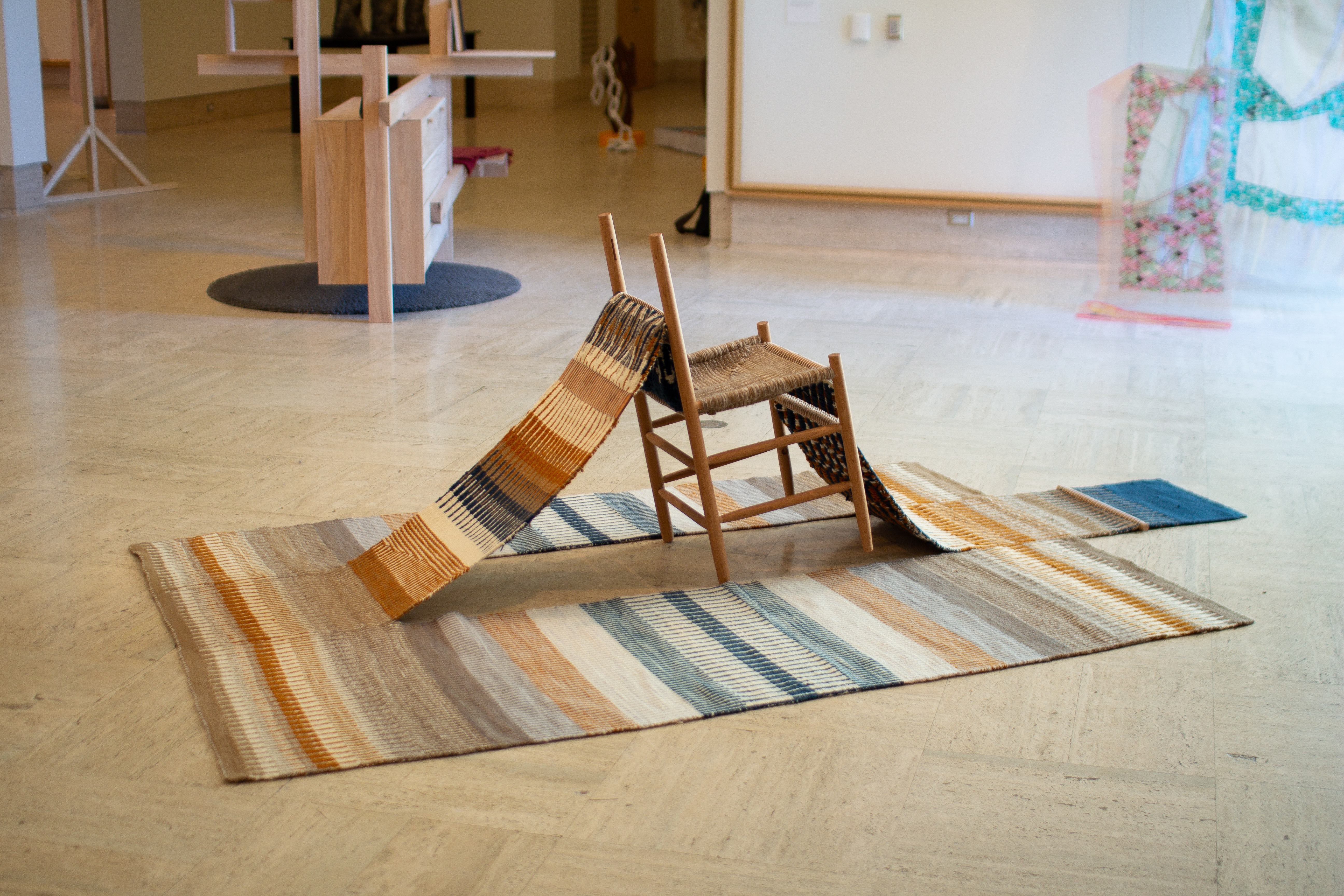TAKEN
The chair, a throne, a seat at the table, sit down and shut up. Chairs are both symbols of power and places of defeat. I chose the Shaker ladderback chair as my starting point, another utilitarian design that’s been copied and appropriated across Europe, Asia and America. For Shaker’s, a utopian religious sect built on communalism, the chair represented a rare moment of autonomy, and an opportunity to claim ownership. In historic records, the advent of the dining chair was celebrated as followers no longer needed to move the bench to and from the table in tandem.
We sweep things under the rug, wipe our feet and protect our floors with rugs, we beat our rugs outside. But in feminist textile history, rugs also take up a queer and feminist place of power and stand obliquely against the male dominated art of paintings on the wall. This woven wool rug employs a Scandinavian krokbragd pattern, translating literally to ‘crooked path’, an underhanded queer allusion.
I allowed my curiosity and boredom to interfere, as I altered and played with the weft facing pattern, breaking the rules as the rug climbed up the chair. In my fantasy, this rug is dismantling the chair, overturning it as it claims it. But it may also be building the chair, mimicking rush seat weaving, assembling rungs from within the weft.
Time is embodied in the transformation of material into form; the process of craftwork can be distilled into a series of gestures. In making this piece, I was self-consciously investigating the repetition of work, noticing inconsistencies in what was deemed a masculine or feminine line of work. While holding a sharp edge to a piece of wood spinning 1000 times per minute is daunting, in practice it feels soothing and meditative. Weaving too can feel automatic, the accumulation of work and time evident, a concrete artifact which attests to your self-worth, through the brutal beating of warp threads.


